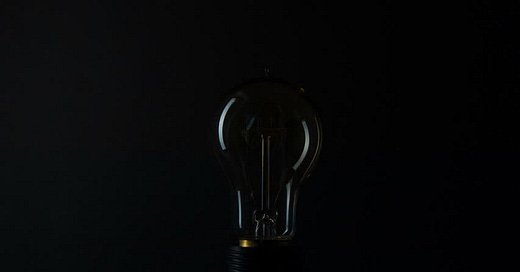Picture this: you’re sipping coffee in Madrid, the sun’s shining, and your phone’s buzzing with the latest news. Suddenly, the lights flicker, your Wi-Fi dies, and the city grinds to a halt. No trains, no traffic lights, no ATMs.
Welcome to April 28, 2025, when Spain and Portugal plunged into darkness, courtesy of a massive blackout that left millions stranded. The culprit? Not a cyberattack or a freak storm, but a grid overloaded with the darling of the green movement: renewable energy.
This wasn’t just a hiccup—it was a screaming alarm about the folly of abandoning reliable fossil fuels and nuclear power for the seductive but shaky promise of “green energy.” Let’s unpack why this rush to renewables is not just foolish but downright destructive.
When ideology kills energy
The Iberian blackout is a case study in what happens when ideology outpaces engineering. Spain, a poster child for the green transition, had been basking in its renewable glory. On April 16, 2025, the country hit a milestone, running its grid on 100% renewable power for a day, with solar and wind leading the charge.
But just 12 days later, the same grid collapsed like a house of cards. Why? The answer lies in a pesky little thing called inertia—or rather, the lack of it. Traditional power plants, like those fueled by coal, gas, or nuclear, use massive spinning turbines that generate electricity and provide a physical buffer against sudden disruptions.
This inertia keeps the grid stable, like a flywheel smoothing out bumps in the road. Solar panels and wind turbines? They’re inverter-based, meaning they lack this stabilizing heft. When a disturbance hit Spain’s grid—likely a sudden drop in solar generation—the system had no cushion to absorb the shock. Within five seconds, 60% of Spain’s electricity demand vanished, plunging the peninsula into chaos.
Spain’s grid was running on 78% wind and solar at the moment of collapse, with natural gas contributing a measly 3%. This wasn’t a fluke; it was physics. Renewables are intermittent by nature—solar fades when clouds roll in, wind dies when the air stills. Without sufficient backup from dispatchable sources like gas or nuclear, the grid becomes a tightrope walker without a net.
Spain’s aggressive push to phase out coal and nuclear, coupled with plans to shutter all five of its nuclear plants by 2035, has left its grid dangerously fragile. The result? A blackout that grounded flights, halted trains, and left hospitals scrambling to keep generators running.
Iberia going “unplugged” wasn’t just a technical failure; it was a policy disaster rooted in hubris. Spain and Portugal, egged on by EU mandates, have funneled billions into subsidies for wind and solar while imposing strict regulations on fossil fuels. The EU’s net-zero fetish, complete with temperature limits for buildings and forced adoption of “energy-efficient” appliances, has created a grid that’s more performative than functional.
Portugal, entirely reliant on imports, was even more vulnerable, with no flexibility to handle a sudden loss of power. The irony? These policies, sold as planet-saving, left millions without electricity, proving that good intentions don’t keep the lights on.
A warning for America
The U.S. is on a similar path, with lawmakers dreaming of a “Green New Deal” and a fossil-fuel-free utopia. California’s rolling blackouts in 2020 already showed what happens when you lean too hard on renewables without enough baseload power. Same with the February 2021 outage in Texas.
The push to purge coal, gas, and nuclear ignores a hard truth: renewables aren’t ready to carry the load. Battery technology, while improving, can’t store enough energy to bridge the gaps when the sun sets or the wind stops. And the economic cost? Staggering. Spain alone expects to spend $60 billion by 2030 to prop up its renewable-heavy grid, all while risking more blackouts.
Let’s be clear: renewables have a role — in the future — but they’re not the messiah. Solar and wind can supplement a grid at best, not anchor it. Nuclear power, with its unmatched inertia and reliability, is the real backbone for a stable, low-carbon future.
Natural gas, dispatchable and flexible, is a critical bridge. Yet green zealots and their political allies are hell-bent on dismantling these workhorses before renewables can even crawl. The result is a grid that’s not just unreliable but downright dangerous.
As F.A. Hayek warned, “The curious task of economics is to demonstrate to men how little they really know about what they imagine they can design.” Spain’s blackout is that lesson writ large.
So, what’s the takeaway? Rushing to ditch fossil fuels and nuclear for a green mirage is like swapping a sturdy ship for a leaky raft in a storm. It’s not just foolish—it’s destructive, leaving millions vulnerable to the whims of weather and wishful thinking.
Spain and Portugal learned that the hard way. Will the rest of us heed the warning, or are we doomed to repeat their blackout blunder? The grid is our civilization’s lifeblood. Let’s not bleed it dry chasing a dream that’s not ready to deliver.
Naturally,
Adam




Rushing to Renewables is a Recipe for REGRET! (Arrrrrrr)